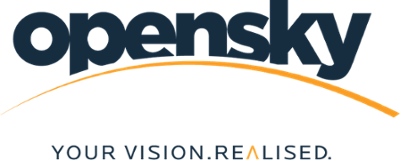Low-Code Automation Webinar – Takeaways
On Thursday 16th July 2020, Emmet Ryan, Technology Editor at the Sunday Business Post interviewed Susan HayesCulleton, “The Positive Economist” and Niall Fitzmaurice from Microsoft about competitiveness in the new times that we live in.
Emmet described the conversation as “The event addressed the reality of the situation, which is uncertainty. When it comes to low code readiness, a lot of the participants didn’t know how to gauge it but we broke it down in a way to make it easier for them.”
Here are the top 8 takeaways from this webinar provided by OpenSky Data session.
1. Tradeoff between well thought out strategy and agility
The breakneck speed that our lives adjusted to working from home in March is no match for how we reframe our businesses and careers looking forward. Some industries have seen Lenin’s famous quote “There are decades where nothing happens, and there are weeks where decades happen” play out. Susan quoted some specific examples in the recent McKinsey piece “The Great Acceleration” including online delivery’s volume increased by the same amount in eight weeks as it had over the entire previous decade. Telemedicine experienced a tenfold growth in subscribers in just 15 days. This pandemic has given momentum to embryonic trends. Deliberate thought and speed to market must happen, in the right balance, simultaneously.
2. Challenge the assumptions
While many of us know the business landscape we once knew will never be the same again, Niall put a number on it. In a Gartner business continuity webinar on March 6, out of 1,500 respondents, just 2% believe their business can continue as normal after COVID-19. That means that 98% of businesses are changing the way they do things. That can scare you or be an opportunity to revisit fundamental questions relating how people interact with each other in your organisation, the technology that it uses to support functions, the marketing channels used to connect with customers etc.
3. Don’t confuse temporary with permanent
The workforce’s remote working global experiment has worked in the context of a quick reaction to a global pandemic and collectively, we’ve made it work in the expectation of an expiry date. We’ve all spent countless hours on Teams, Zoom and others in the past few months but oftentimes, it was with people that we had already met or knew in some way. Together, we had built up the social capital where we could simply migrate to an online discussion when much of the rapport had been built. Lots of people who have taken on new roles spoke about how difficult it was to navigate through the political landscape, find out who’s who and just get to grips with the culture in the absence of social interaction in the physical workplace. Susan shared her experienced of this last year when taking on some virtual interns. Rather than take four months’ experience and extrapolate it into the permanent future, give some thought to how a potentially hybrid, flexible model can work for you
Watch "Cracking the Competitiveness Code" Webinar!
4. Our relationship with space has changed
The status quo of “going to work” in a building with all our other colleagues is no longer. Many of us consider air travel not just out of bounds, but unthinkable for a series of meetings that can happen via video. Society critically assesses if public spaces are safe before using them. Therefore, we can now use our space much more strategically. It starts with considering the purpose of the space – is it to brainstorm together in-person, have impromptu meetings over coffee and be visible? In that case, having more time in a physically distant safe office is important. However, if it is simply somewhere that’s different from home to separate life and work as well as meet in small groups from time to time, then leasing some co-working space in satellite locations could be just the right lower-cost option.
5. Use your freed up capacity strategically
Since so many people are now working from home, they don’t have a commute and the interruptions that lots of people in the same building can bring, they’re being more productive. Susan referred to the findings from a Forbes piece whereby a California based company which deduced that workers a 47% increase in productivity. Their analysis sprung from 100 million data points across 30,000 users. Business News Daily found another report that concluded “remote employees work 1.4 more days per month than their office-based counterparts, resulting in more than three additional weeks of work per year”. From a personal point of view Susan said that while she has loved travelling the world building relationships for the business, she has been given back all that time spent in transit. We don’t know what different phases of the future may look like, but it’s important to use any new freed up capacity in the best way for our business now rather than wistfully wait for things to change. Niall also encouraged us to look at ways to leverage what we do use. He spoke about the wide-ranging technology that Teams offers us through connected APIs and other functionality.
6. Use low code to get things done fast.
Before we commit to a project, we look at the time, resources and expertise needed. How about if you could walk a mile in that initiative’s shoes just to get a real feel for its feasibility. That’s where low-code comes in. In simple terms, this is where anybody can build a piece of technology using intuitive interfaces and templates. For example, Susan talked about a time they wanted to have a go at bringing an app to market. They used Bubble to test out initial reactions. This approach saved them an absolute fortune and it made them really think through what they wanted, why they wanted it and if it was worthwhile. Niall shared with us that “by 2024, low-code application development will be responsible for more than 65 percent of application development activity.” In the meantime, the “hardcore” projects can be given to specialists. This makes a lot of sense and can enable millions of businesses to be nimbler and more competitive.
7. Don’t let the automation tail wag the dog.
If you can document a process that a person can perform over and over again, could a piece of technology do it for you instead? In many cases, the answer is yes but the question is if we would want it to. For example, Susan pointed out that they know the typical answers that people ask us about their Transition Year Savvy Teens programmes and a bot could effectively answer them, but instead they want to talk to people with enquiries. However, there are plenty of other things that an automated workflow can really work well and they’ve put several of them in place so that they can put more time and attention into customer service. Niall said that rather than looking at automation through a “oh cool, look what we could do!” lens (which can be tempting when you look at the tools that are out there!), comb your business processes and question if it could be done better, faster or more efficiently with a view to overall improvement.
8. Cybersecurity matters now more than ever.
In May, Susan summarised a webinar relating to cybersecurity and one of the central themes that came out of that is that a more dispersed workforce, more ready access to ever more data and the proliferation of mobile device use means that businesses need to be critically aware of tech hygiene. Niall followed up with just how much Microsoft pours into ensure their products and client tech experiences are safe. He also pointed out that sometimes the biggest cyber risk you can face is through people so it’s important to work with suppliers you trust and technology that’s robust.
Find out more about Low-Code Automation tools
Book your FREE Consultation to assess your low-code readiness here.
Alternatively, you can email OpenSky at info@openskydata.com to arrange your consultation.


